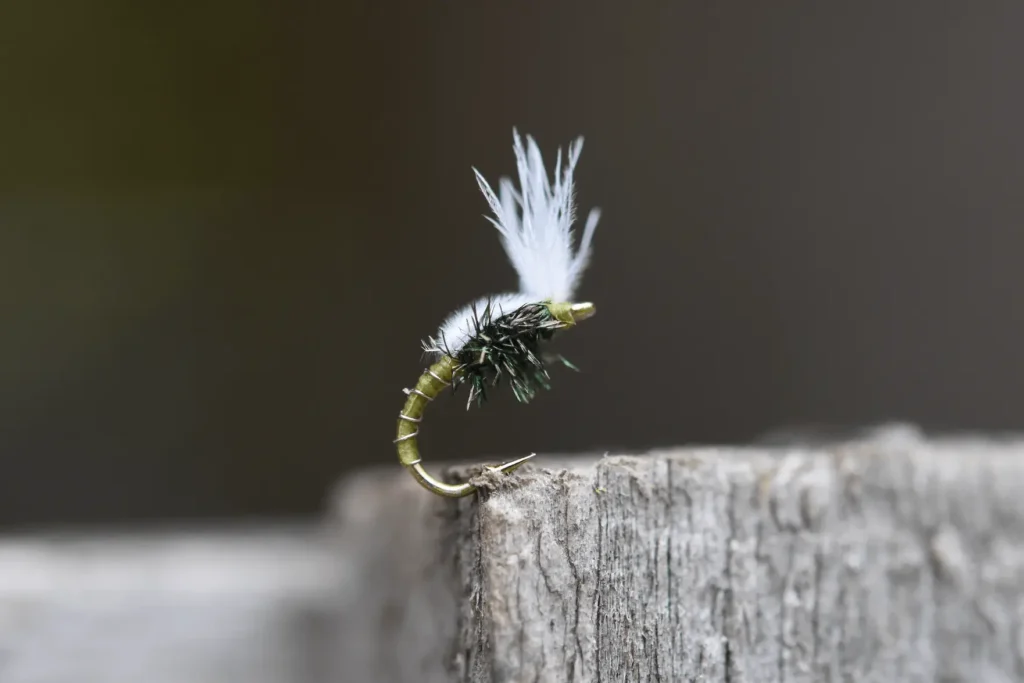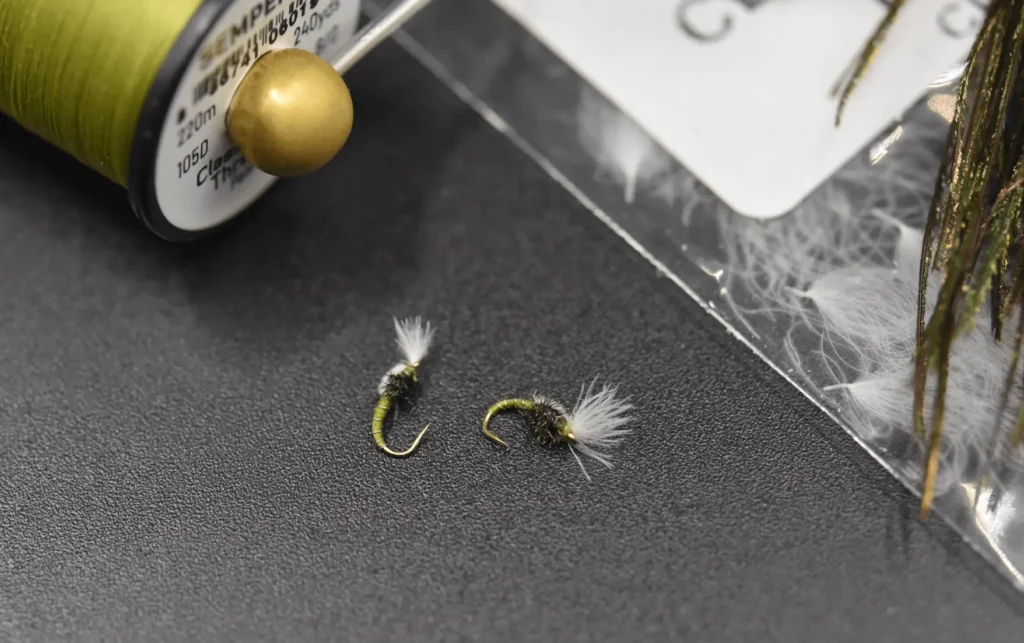How to Fish and Tie the Smokejumper Fly

The Smokejumper was developed by Montana fly fishing guide Mike Hoiness for fishing the Bighorn River. The fly works everywhere, though, and is particularly good in small sizes for matching midge hatches here in the Eastern U.S. One of the things I appreciate about this pattern, other than its effectiveness at catching trout, is that it’s extremely visible even in the sizes (18-24) that I like to tie it in.
Although the Smokejumper is typically tied with an olive body to imitate the many species of Blue Wing Olives, it can be tied in a variety of colors. The most effective variations, I’ve found, are black and brown bodies, both of which can imitate various species of midges as well as baetidae. Regardless of body color, though, I still use CDC in light dun for visibility.
Fishing the Smokejumper Fly
The Smokejumper is one of a handful of patterns I use when trout are keying on emergers during a midge or tiny BWO hatch. It has the same basic profile as the Mole Fly, which you can read about here, and a slightly curved body that is almost C-shaped. As midge pupae emerge, they have a translucent appearance and defined segmentation, which is where the Smokejumper comes in with its silver-ribbed body and peacock herl thorax.
When pupae emerge, they propel themselves up through the water column using a small bubble of gas (almost like releasing a fart!) to reach the surface, where they often get trapped in the film. Being diminutive in size, midges can have trouble pushing through the surface tension, and so they get trapped there and become easy targets for trout.
Whereas the Mole Fly is a very basic midge imitation, the Smokejumper is a bit more realistic in that it includes a thorax and wing pad. And yes, trout can get finicky, even on flies this small, and it’s usually a result of which stage of the hatch they’re actually eating. For instance, if most of the activity is taking place just below the water’s surface (you’re seeing dimples but the trout’s nose isn’t actually breaking the surface), then a Smokejumper might be a good fly choice to start.
The Smokejumper is also a good option for those long, flat, slow-moving pools that have glass-like surfaces but you always seem to find a couple trout rising there.
A Smokejumper is a natural choice when I see the occasional trout shoot up out of the water during a midge hatch, too. This tells me that the fish was likely chasing an insect ascending the water column rather than only feeding on what’s already on the surface. The Smokejumper fits the bill here because it has the thorax and wing pad of an emerging insect.
In all cases, the Smokejumper works best for me when fished as a dry fly, on top and/or in the film. The CDC wing should be visible as the curved body hangs directly below. When fishing flies such as the Smokejumper that incorporate CDC wings, be sure to carry an ample supply of a desiccant-style floatant. Frog’s Fanny, Loon Dust, and other equivalents are the best options for keeping CDC flies productive.
Tying the Smokejumper Fly

Materials needed to tie the Smokejumper fly
Hook: Model 13 Emerger Style Hook from Wholesale Fly Company, Sizes 18-24. If you’re looking for a good barbless option, their Model 28 Czech Nymph Caddis hook also works great for this pattern.
Thread: 12/0 Pale Olive, Semperfli Classic Waxed Thread
Body: Pale Olive
Ribbing: XS Silver Ultra Wire
Wingpad: Light Dun CDC Oiler Puff. If oiler puffs are unavailable, use the upper half or third of a regular CDC feather.
Thorax: Peacock Herl
Wing: Tip of the Light Dun CDC Oiler Puff Used to Create the Wingpad.
The Smokejumper looks fancy but is actually a very easy fly to tie. The most important aspect to keep in mind when tying small flies is to keep them sparse. Often, flies turn out funky or don’t look right when too much material is used. I tie most of my Smokejumpers in sizes 18-24, after all, and insects that small have very little mass. To imitate them correctly, use only a sparse amount of materials.
Start by attaching some 12/0 Pale Olive Semperfli Classic Waxed thread to the hook shank. I like the Semperfli here because it has a high break strength compared to thread diameter. It’s my preferred thread for tying all types of midges because finishing the fly will also produce a smaller head that doesn’t crowd the hook eye, hence making this fly easier to tie onto your tippet. And trust me, your eyes will appreciate it if you don’t crowd the hook eye!
Next, attach a strand of XS Silver Ultra Wire. Create a thin thread body, just enough to basically cover the hook shank, and then counterwrap the ribbing wire over top of the thread body.
Tie in a CDC oiler puff by the butt section, followed by two strands of peacock herl. Wrap the peacock herl to create a small thorax, leaving enough space near the eye of the hook so that you can bend the CDC oiler puff forward and still have room to secure the material and whip finish. If necessary, trim the CDC oiler puff shorter by pinching off the tips. These fibers are brittle and should easily break off. Ideally, I like the wing to extend beyond the eye approximately one hook gap in length.
Traditionally, the Smokejumper fly is tied with no tail. However, for those situations when fish are only taking emergers with trailing shucks, you can tie in a few strands of brown Z-Lon or Antron before tying in the silver ribbing wire. Keep this tail extremely sparse and trim about one hook gap in length. The advantage of tying this fly with a tail is that if the tail is not needed, you can simply cut it off…but you can’t add if you do need it.
Watch: Fly Tying the CDC Puff Daddy and Smokejumper
Did You Find This Fly Tying Guide Helpful?
Stay up to date with the Dark Skies Fly Fishing monthly newsletter for free and receive the latest posts in fly fishing news, tricks, tips, and techniques, stream reports, as well as updates on new flies added to the Online Store and exclusive discounts!
Sign Up NowHave a fly fishing question you’d like answered? Drop us a line at info@darkskskiesflyfishing.com! If we use your question in a blog post or in the newsletter, we’ll send you a FREE fly box with a dozen of our favorite nymphs and dry flies!
